9 Facts You Didn’t Know About Santa Fe’s Indigenous History and Culture
April 24, 2023
Welcome to Santa Fe, New Mexico – a city rich in culture and history!
As I walk through the streets of Santa Fe, I am surrounded by the unique architecture and art that reflects the city’s rich history. I am reminded that Santa Fe is home to the oldest continuously inhabited community in the United States – Taos Pueblo. The adobe structures and ceremonial buildings are a testament to the enduring culture and traditions of the Pueblo people.
As I explore this beautiful place, I am struck by the deep roots of the Indigenous peoples who have called this land home for centuries. Their history and traditions are essential to Santa Fe’s identity, and I am excited to learn more about them.
As I delve deeper into Santa Fe’s history, I am also struck by the impact of Spanish colonization on the area’s Indigenous peoples. Suppressing traditional spiritual practices and forced assimilation had a lasting effect on the Indigenous communities. Still, despite these challenges, the people of Santa Fe have preserved their culture and traditions through syncretism.
Today, the Indigenous community in Santa Fe is thriving, and efforts to preserve and celebrate their culture can be seen throughout the city. From the Santa Fe Indian Market to museums and cultural centers, there are countless opportunities to learn about and support the Indigenous peoples of Santa Fe.
Let’s explore some lesser-known facts about Santa Fe’s Indigenous history and culture in this article, as I also need to be educated. Let’s discover as we uncover the fascinating stories and traditions of the Indigenous peoples who have shaped Santa Fe into its current city.
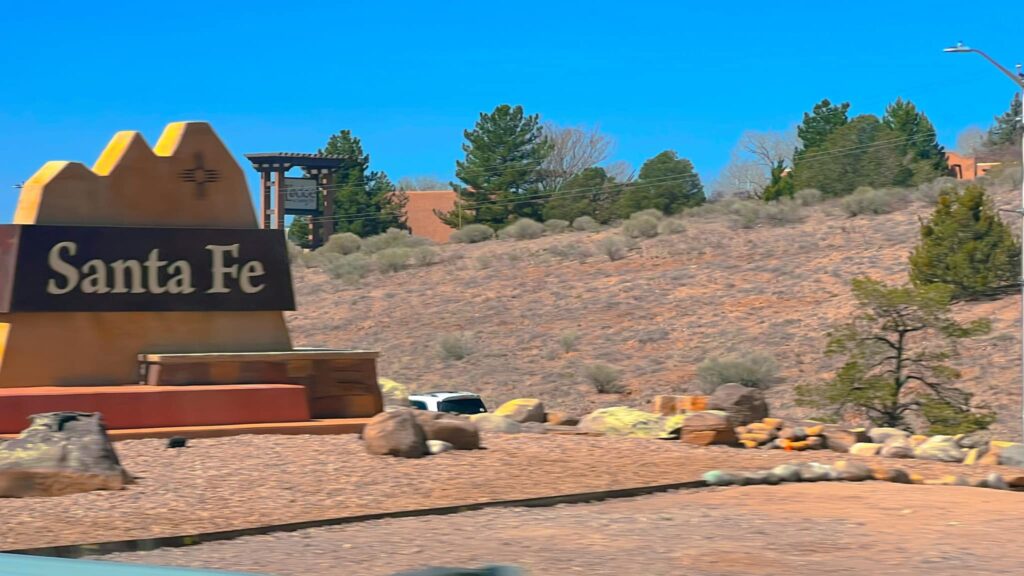
The Oldest Continuously Inhabited Community in the United States
Did you know that just a short drive from Santa Fe lies the Taos Pueblo, considered the oldest continuously inhabited community in the United States? The Taos Pueblo community has been occupied for over 1,000 years, with some estimates dating back to 3,000 BC. This makes it one of the oldest continuously inhabited places in North America.
The Taos Pueblo is a UNESCO World Heritage site significant not only for its age but also for its unique architecture and culture. The pueblo comprises multi-story adobe buildings, some of the oldest examples of their kind in the United States. The buildings are constructed using a traditional technique involving layering mud and straw, giving them a distinctive appearance.
The people of Taos Pueblo have a rich and complex culture shaped by their long history in the area. They speak Tiwa, a language that is still spoken by many of the community members today. Traditional practices such as farming, hunting, and fishing are still an important part of life, and many people still practice traditional crafts like pottery-making and weaving.
Visitors can explore the Taos Pueblo and learn more about its history and culture. It’s a great opportunity to understand better the Indigenous people who have lived in this area for thousands of years and appreciate their incredible resilience and strength.
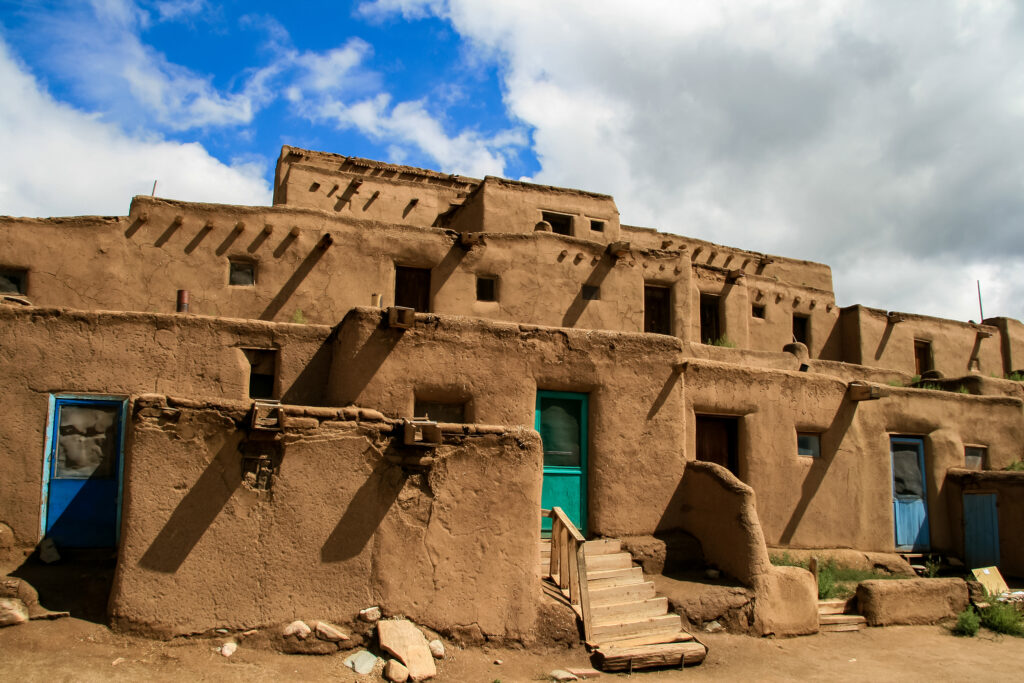
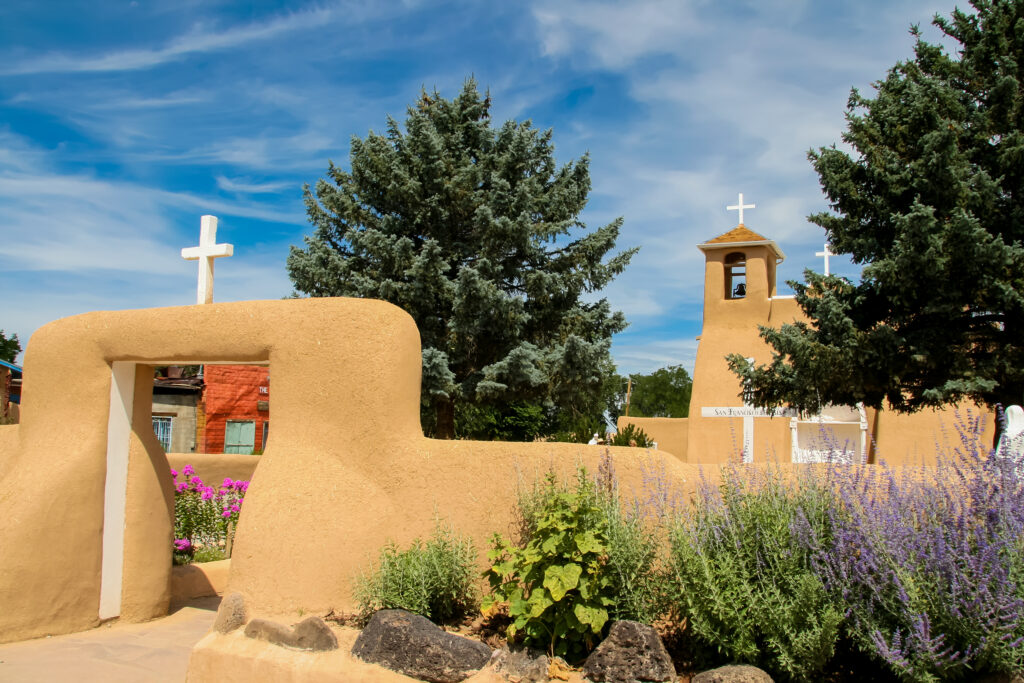
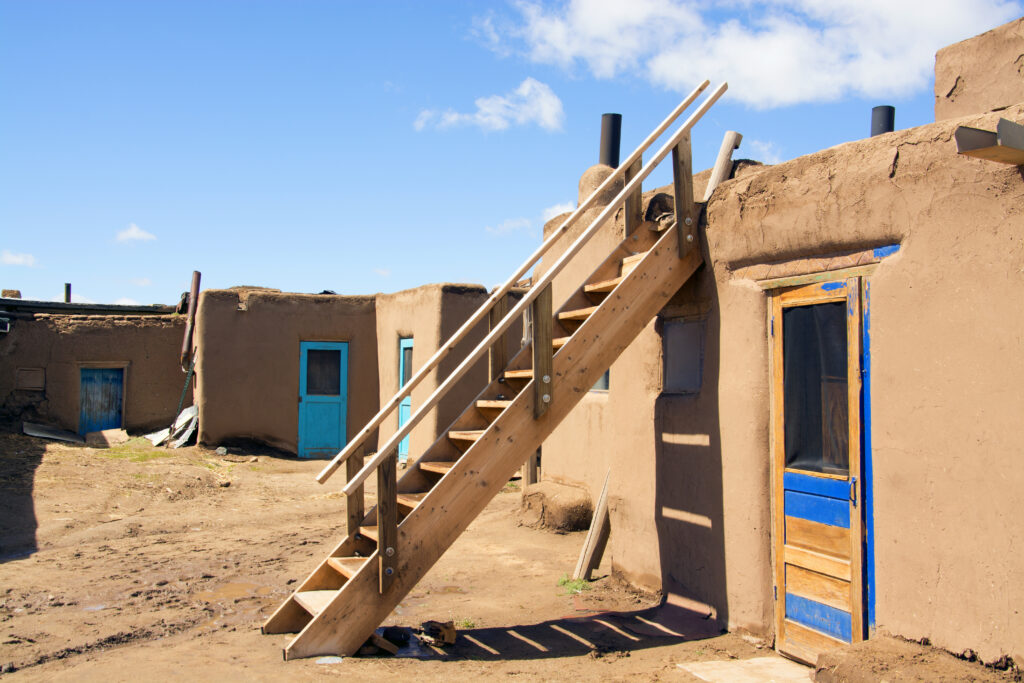
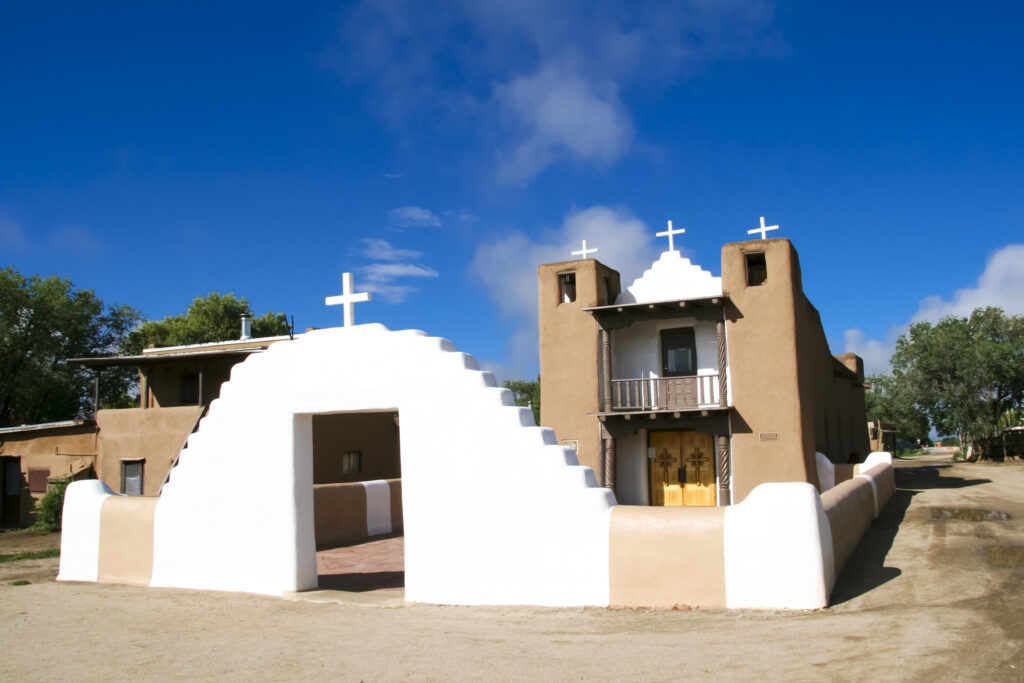
One significant event that impacted Santa Fe’s Indigenous history and culture was the Pueblo Revolt of 1680
The Pueblo Revolt was a rebellion by several Pueblo tribes against Spanish colonization in the area. The Spanish had been imposing their culture, religion, and way of life on the Indigenous peoples for decades, leading to resentment and frustration among the Pueblo communities.
In 1680, under the Pueblo leader Popé, the tribes banded together and launched a coordinated attack against the Spanish settlers in the area. The Spanish were driven out of Santa Fe, and the Pueblo people regained control of the land.
The Pueblo Revolt had a significant impact on Indigenous culture and traditions. It was a moment of triumph for the Pueblo people, who struggled to maintain their way of life under Spanish rule. They were able to reclaim their land, culture, and traditions, and the impact of this victory is still felt in Santa Fe today.
The Pueblo Revolt also had a lasting impact on Santa Fe’s history. The Spanish eventually regained control of the area, but the Pueblo Revolt was a reminder of the Indigenous peoples’ strength and resilience. It also led to greater recognition and appreciation of Indigenous culture and traditions, which have become essential to Santa Fe’s identity.
Spanish Colonization had a significant impact on Santa Fe’s Indigenous Culture.
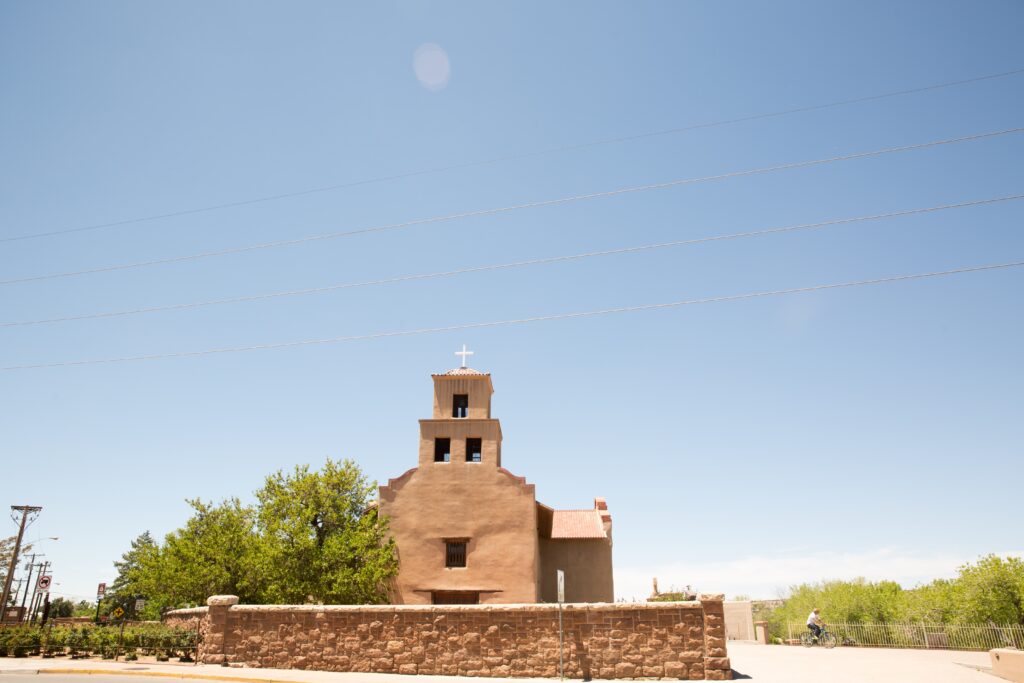
While Santa Fe‘s Indigenous history and culture are incredibly rich and diverse, it’s impossible to discuss this history without acknowledging the significant impact of Spanish colonization. When the Spanish arrived in the area in the 16th century, they brought their culture, religion, and way of life. This led to significant changes in Indigenous culture and traditions, some of which were positive, while others were not.
One of the most significant impacts of Spanish colonization on Indigenous culture was the introduction of Catholicism. The Spanish were intent on converting the Indigenous peoples to Catholicism, which led to the suppression of traditional Indigenous religious practices. However, Spanish and Indigenous traditions blended over time, developing a unique syncretic culture that blended elements of both traditions.
This process of syncretism has had a lasting impact on Santa Fe‘s culture and traditions. Today, you can see the influence of Spanish and Indigenous cultures in everything from architecture to food. It’s a testament to the Indigenous peoples’ resilience and ability to adapt to changing circumstances while maintaining their cultural identity.
It’s important to note that the impact of Spanish colonization on Indigenous culture was not all positive. The Spanish brought diseases that devastated Indigenous populations, and their policies often led to the exploitation and mistreatment of Indigenous peoples. Despite this, the impact of Spanish colonization on Indigenous culture is a significant part of Santa Fe‘s history and has contributed to the unique and vibrant culture of the area today.
The Pueblo Peoples
The Pueblo peoples have a long and rich history in the Santa Fe area, with many communities that have been continuously inhabited for centuries. These communities include the Taos Pueblo, the Santo Domingo Pueblo, the Acoma Pueblo, the Zuni Pueblo, and many others.
The Pueblo peoples have a unique culture centered around their spiritual beliefs and practices. They believe in a spiritual force in all things and maintaining a harmonious relationship with the natural world. This relationship is reflected in their agricultural practices, which are based on a deep understanding of the land and its cycles.
Trade has also played an essential role in Pueblo life, with the Pueblo people being well-known for their pottery, weaving, and other crafts. They traded with other Indigenous peoples and the Spanish settlers who arrived in the 16th century.
Despite their challenges and hardships, the Pueblo people have maintained their cultural traditions and continue thriving in Santa Fe. Their rich culture and history are an integral part of the fabric of Santa Fe. Visitors can learn much about their spiritual beliefs, agricultural practices, and trade traditions by visiting one of the many Pueblo communities in the area.
The Apache and Comanche have a significant presence in Santa Fe.
In addition to the Pueblo peoples, the Apache and Comanche also have a significant presence in Santa Fe. The Apache came from the northern plains and migrated southwards, while the Comanche were originally from the Great Plains region.
Both the Apache and Comanche had a complex relationship with the Spanish settlers who arrived in the 16th century. While they initially traded with the Spanish, tensions soon arose, leading to conflicts and battles. Later, with the arrival of American settlers in the 19th century, the Apache and Comanche were displaced from their traditional lands and forced onto reservations.
The Apache and Comanche have unique aspects of their culture that differ from the Pueblo peoples. For example, they were known for their nomadic lifestyle, allowing them to follow the migration patterns of buffalo and other games. They also had a strong warrior tradition, which was necessary for survival in the harsh environment of the Great Plains.
Today, the Apache and Comanche are still in the Santa Fe area, and their history and culture are essential to the region’s rich Indigenous heritage. Visitors to the area can learn about their unique cultural traditions by visiting museums and historical sites and participating in cultural events and festivals.
Santa Fe is home to a thriving Indigenous art scene.
Santa Fe’s rich Indigenous history and culture boasts a thriving Indigenous art scene. Indigenous art in Santa Fe includes various mediums, including pottery, weaving, jewelry, painting, and sculpture.
Art has been an essential aspect of Indigenous culture for centuries. It serves as a means of storytelling, with many pieces depicting significant events, legends, and myths passed down through generations. It also plays a crucial role in spirituality, with many artworks imbued with symbolic meaning and used in ceremonial contexts.
Many renowned Indigenous artists have called Santa Fe home, including Maria Martinez, famous for her exquisite black pottery, and Tony Abeyta, whose colorful paintings blend traditional Indigenous motifs with modern abstract styles. Other notable artists include Tammy Garcia, Roxanne Swentzell, and Kevin Red Star.
Visitors to Santa Fe can experience Indigenous art by visiting galleries and museums that showcase local artists, such as the Institute of American Indian Arts Museum, the Museum of Contemporary Native Arts, and the Wheelwright Museum of the American Indian. They can also participate in workshops and classes to learn about traditional art forms like pottery-making and weaving from Indigenous artisans.
Santa Fe has several laws to preserve the city’s architecture.
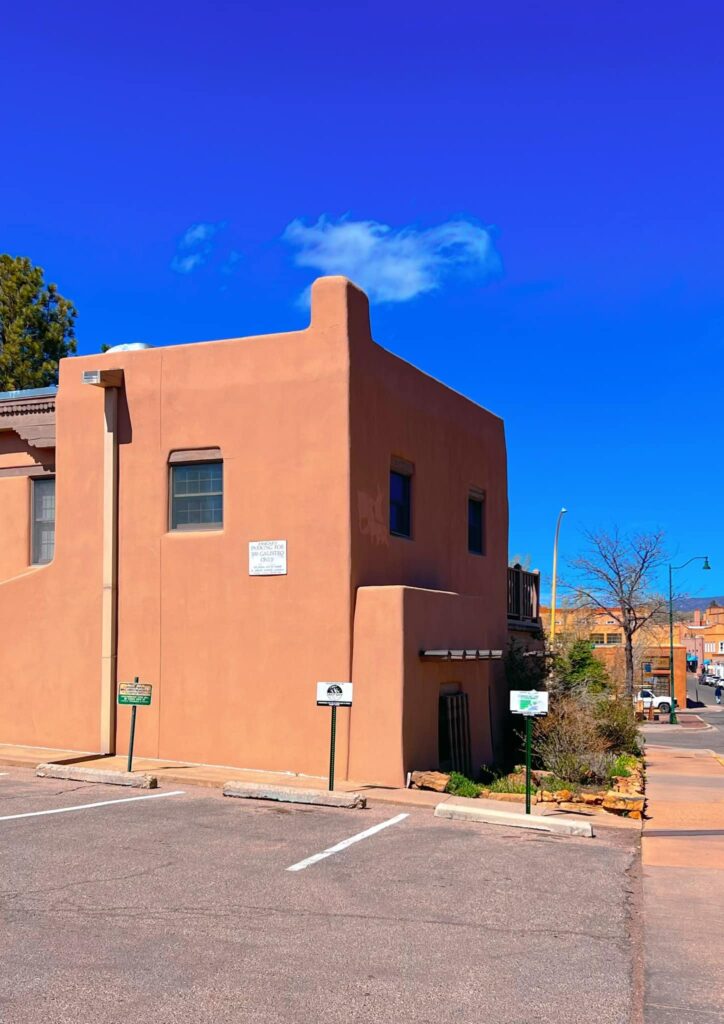
While this section may not be directly related to Indigenous history and culture, it is important to note that Santa Fe has several laws to preserve the city’s natural and cultural resources. For instance, the city’s historic preservation code outlines guidelines for building construction and alteration to maintain the character and integrity of the city’s architecture. This is important because the architecture and design of Santa Fe’s buildings often reflect the city’s Indigenous and Spanish colonial influences.
Additionally, Santa Fe has strong land-use policies to preserve the area’s natural beauty and resources. The city has established regulations to protect sensitive habitats, manage water resources, and promote sustainable development. These policies are important because they ensure that the natural environment that Indigenous peoples have long depended on for survival is protected and preserved for future generations.
These laws and policies are a testament to Santa Fe’s commitment to preserving and protecting its unique cultural and natural resources, which include its Indigenous history and traditions.

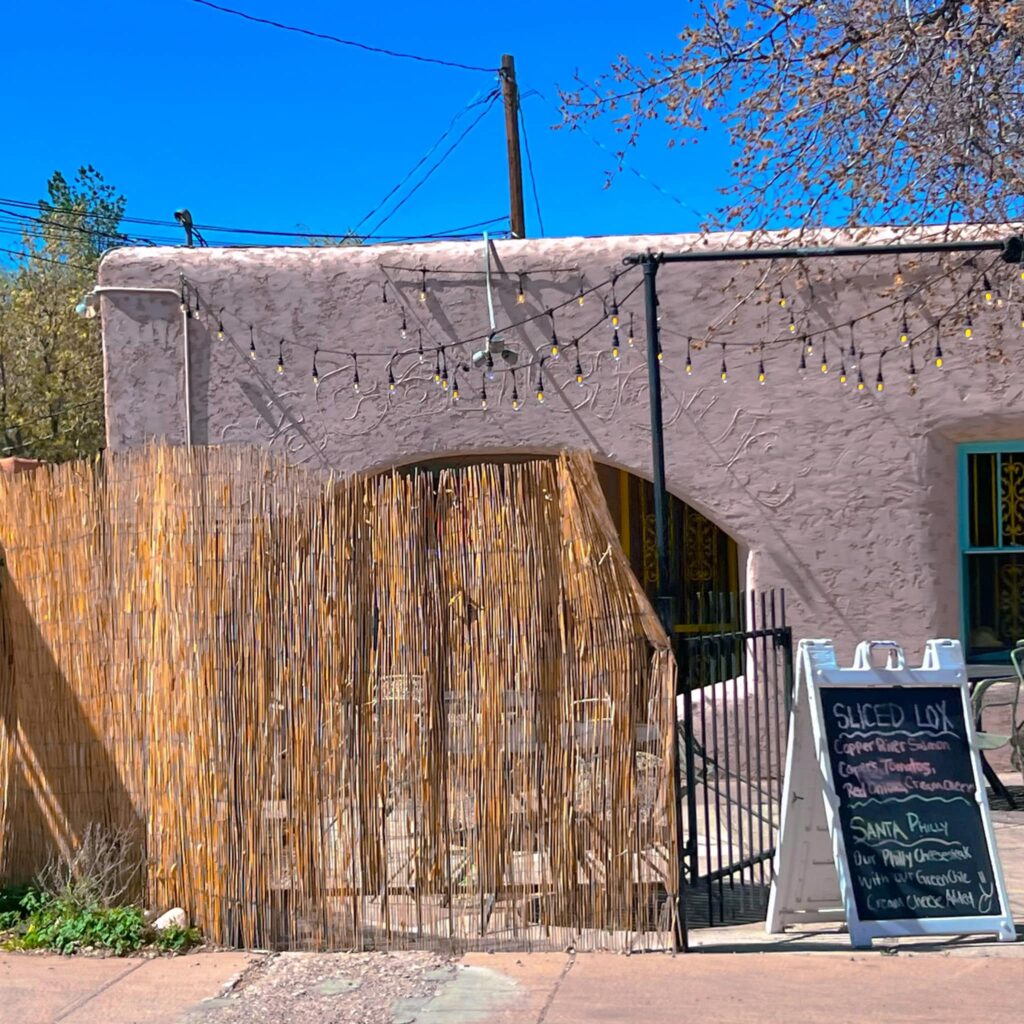
Santa Fe’s Indigenous culture is not just an artifact of the past.
Santa Fe’s Indigenous culture is not just an artifact of the past but a vibrant, living tradition that continues to evolve and thrive. Santa Fe is home to a diverse Indigenous community with members from various tribes and nations. Many Indigenous people in Santa Fe continue to practice traditional customs and crafts, such as pottery, weaving, and jewelry-making, while others are involved in contemporary art and music scenes.
Efforts are also underway to preserve and celebrate Indigenous culture in Santa Fe today. One of the most visible ways this happens is through the annual Santa Fe Indian Market, which attracts artists and visitors nationwide. The market has been held for over a century and provides a platform for Indigenous artists to showcase their work and connect with buyers and collectors.
Additionally, Santa Fe has enacted laws and initiatives to preserve Indigenous culture and the environment. For example, the city has implemented strict building codes and zoning regulations to protect the natural landscape and limit urban sprawl. Many of these laws also acknowledge the spiritual significance of the land and the Indigenous peoples who have lived there for centuries.
Indigenous culture is integral to Santa Fe’s identity and heritage. By recognizing and honoring this legacy, the city is preserving its history and ensuring that future generations can continue learning from and appreciating the richness of Santa Fe Indigenous culture.
Conclusion
In conclusion, Santa Fe’s Indigenous history and culture are rich and vibrant, with a long and complex history that is still being written today. Santa Fe’s Indigenous culture is vital to the city’s identity, from the oldest continuously inhabited community in the United States to the contemporary Indigenous community. We encourage readers to learn more about this important history and to support efforts to preserve and celebrate Indigenous culture in Santa Fe and beyond.
Leave a Reply
© copyright 2024 Congologie Studios